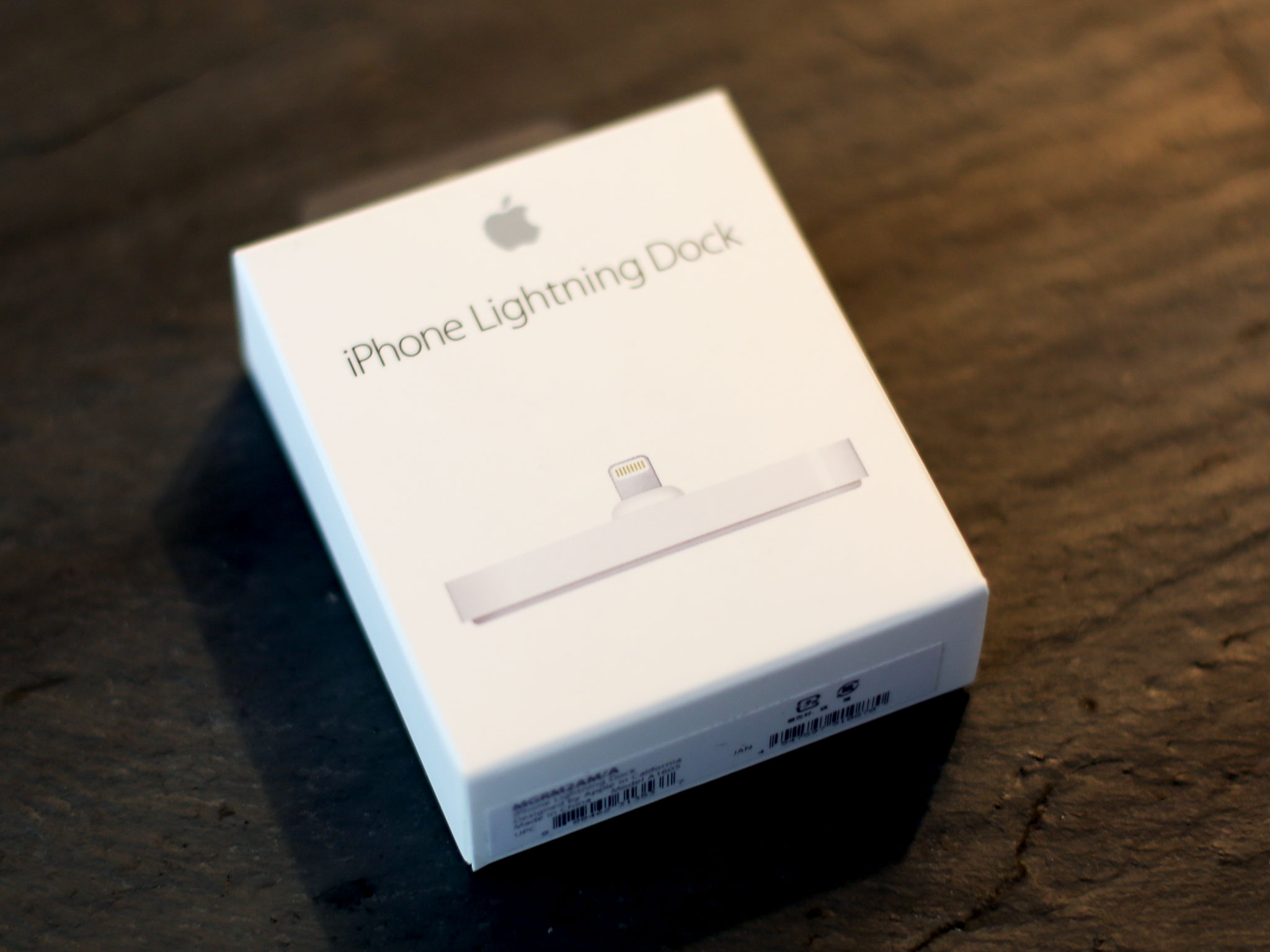
Update: Apple has released new versions of the Lightning Dock to match the new iPhone 6s colors, including silver, space gray, gold, and rose gold.
It accomplishes that minor miracle by eschewing the old, grooved design of the past for new, flat one that presents only a surface and a Lightning connector. That way the width of the phone doesn't matter now, nor will it matter into the future. So we know the new dock is flexible — but is it any good?
- $39 - Order now
The bottom of the new iPhone Lightning Dock is covered in the same type of non-slip material as previous generations. The front and both sides are smooth. And the back has both the plug for your existing Lightning Cable, and a 3.5mm headphone jack.
The non-slip material at the base does its job as well as ever, keeping your iPhone Lightning Dock in place but still letting it slide around if you put even a small amount of effort into it. The Lightning port is a requirement, and since the iPhone moved its own headphone jack to the bottom, so is the 3.5mm jack.
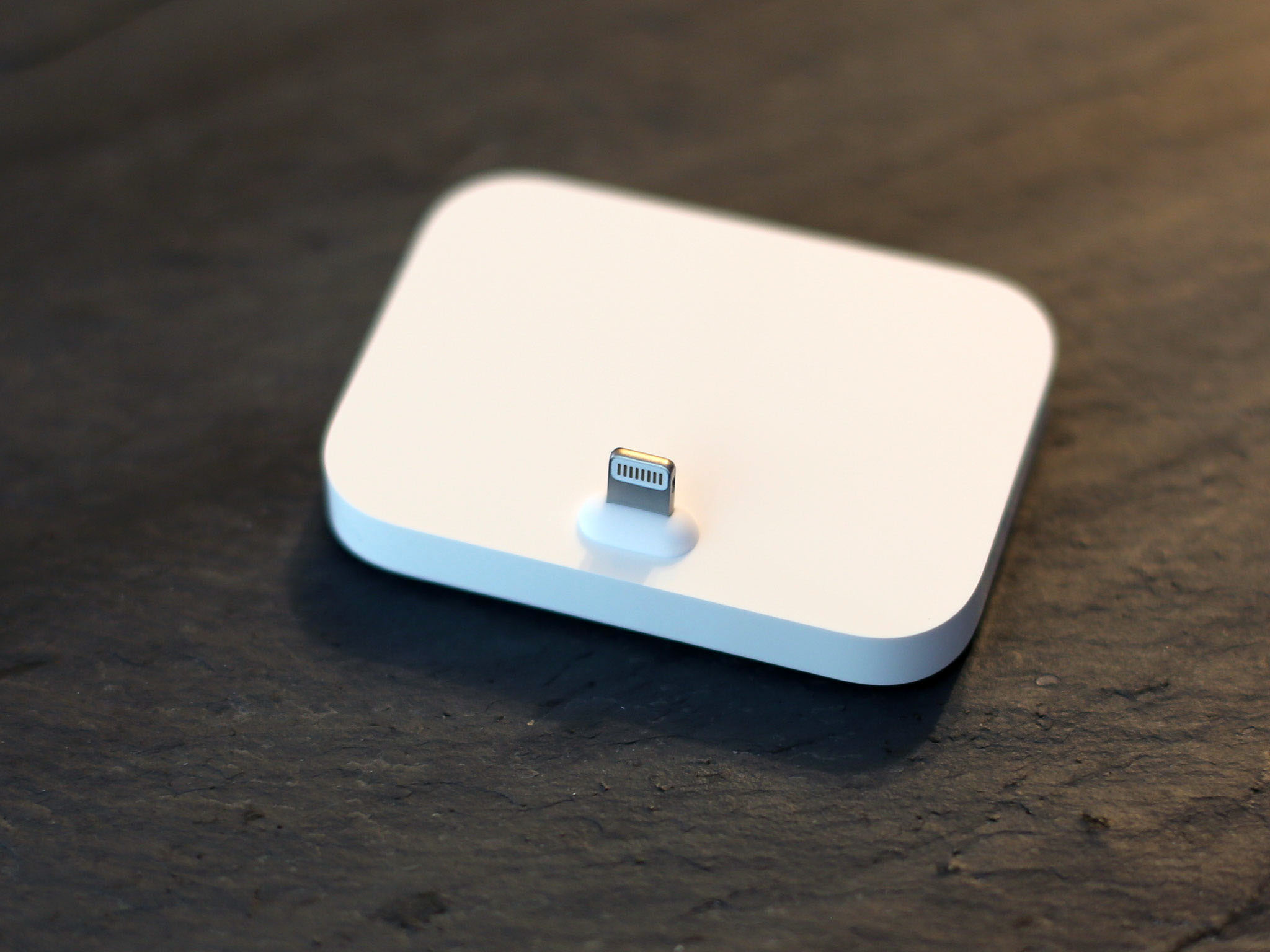
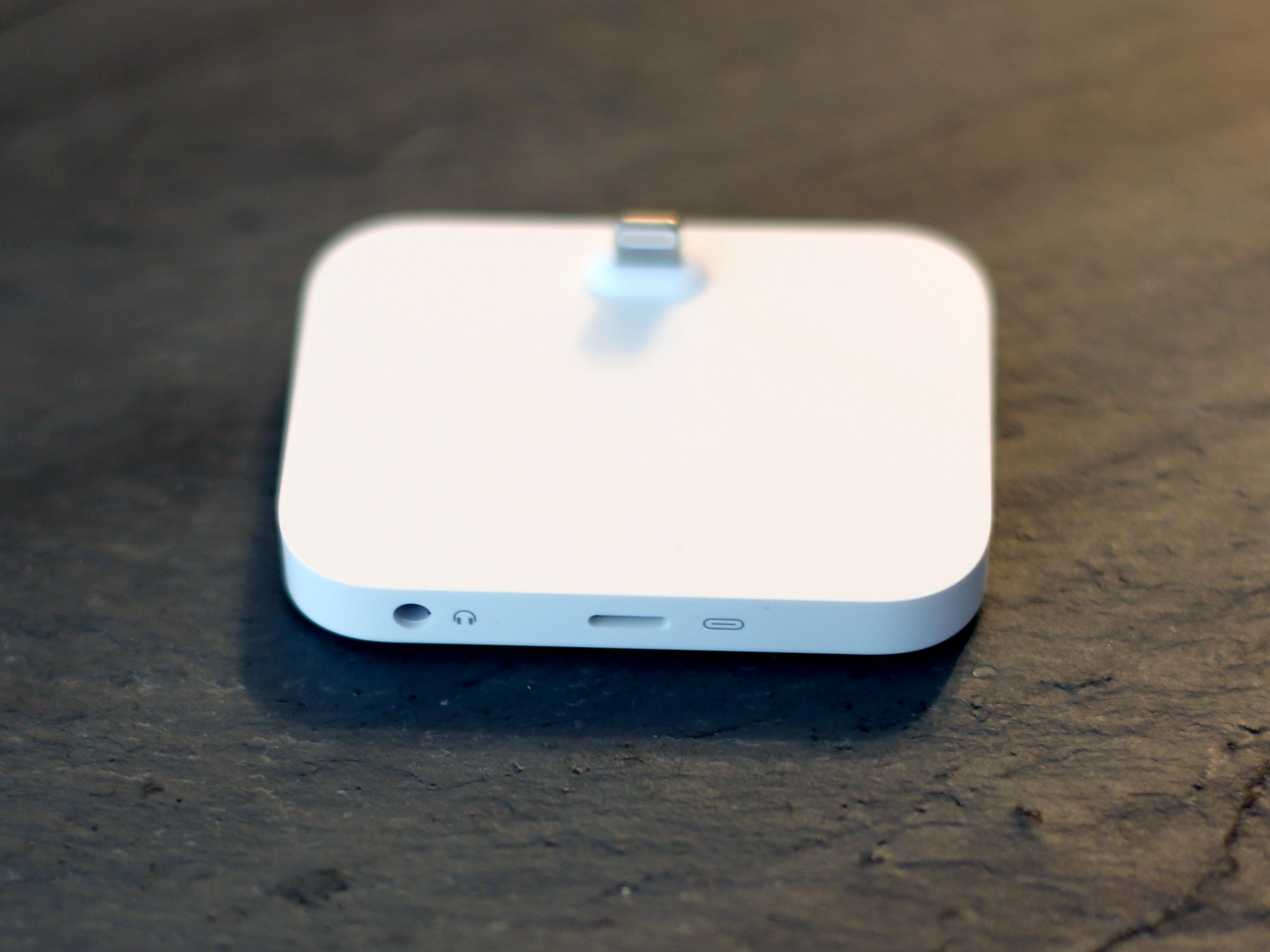
Because there's no form-fitting groove anymore, you really can plug in any iPhone with a Lightning connector. That includes the iPhone 5, iPhone 5s, iPhone 5c, iPhone 6, and iPhone 6 Plus; and conceivably future Lightning-equipped iPhone generations as well.
You can, physically, put an iPad mini or even full-size iPad on the Lightning Dock as well, but it's called an iPhone Lightning Dock for a reason. It's just the connector bearing all the weight of the device, and if you overload it, you risk it snapping off. Inside your iPad. And you really, truly don't want that.
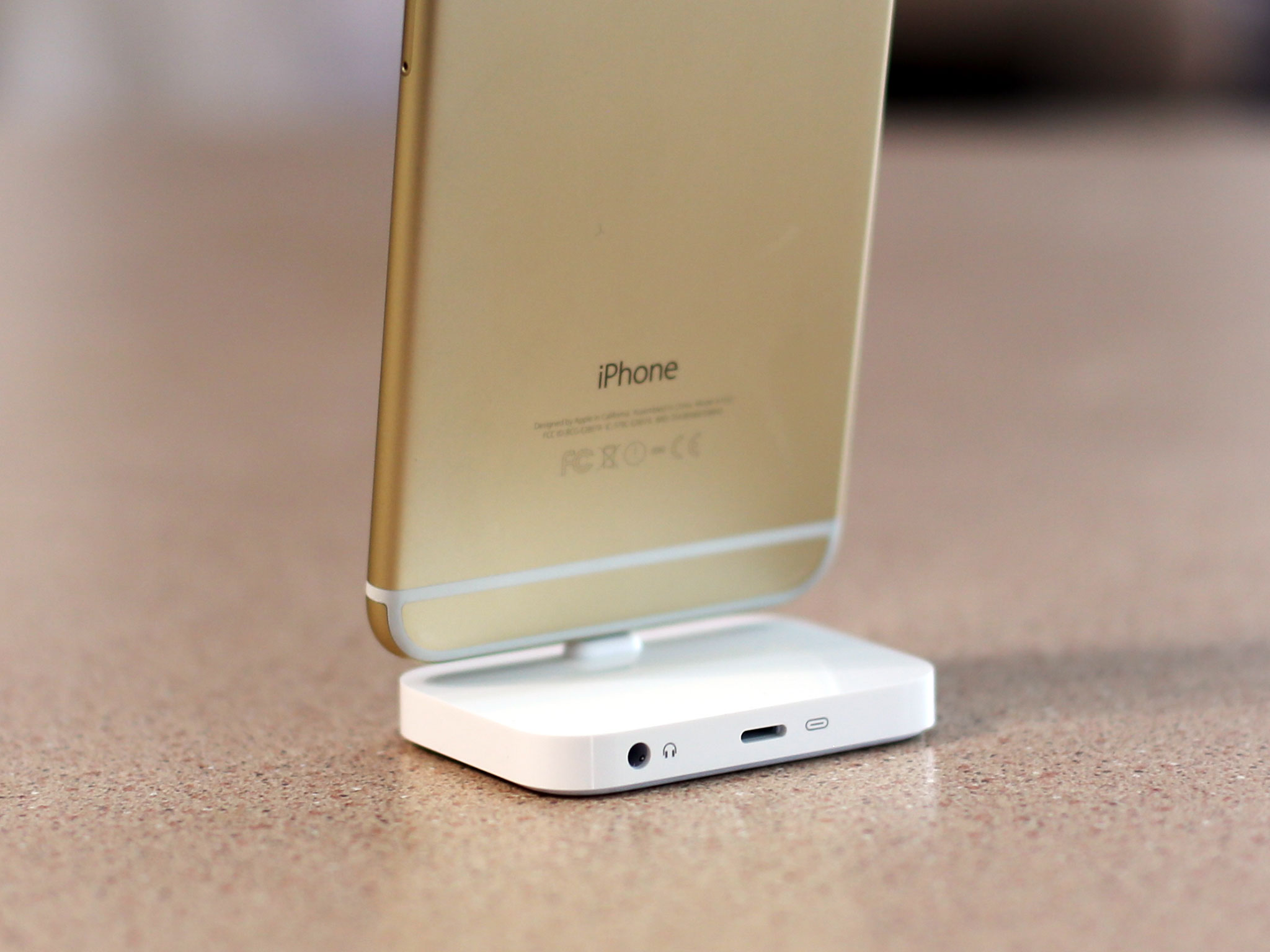

When it comes to cases, you might think the lack of a groove helps there as well. But only sometimes. Width is no longer a factor but depth still is. If there's significant bulk on the bottom of the case, it will prevent the Lightning port from properly connecting.
So, unless it's a relatively thin case, or the area around the Lightning connector is opened up (like on Apple's cases) or can be opened or removed, you might still run into problems.
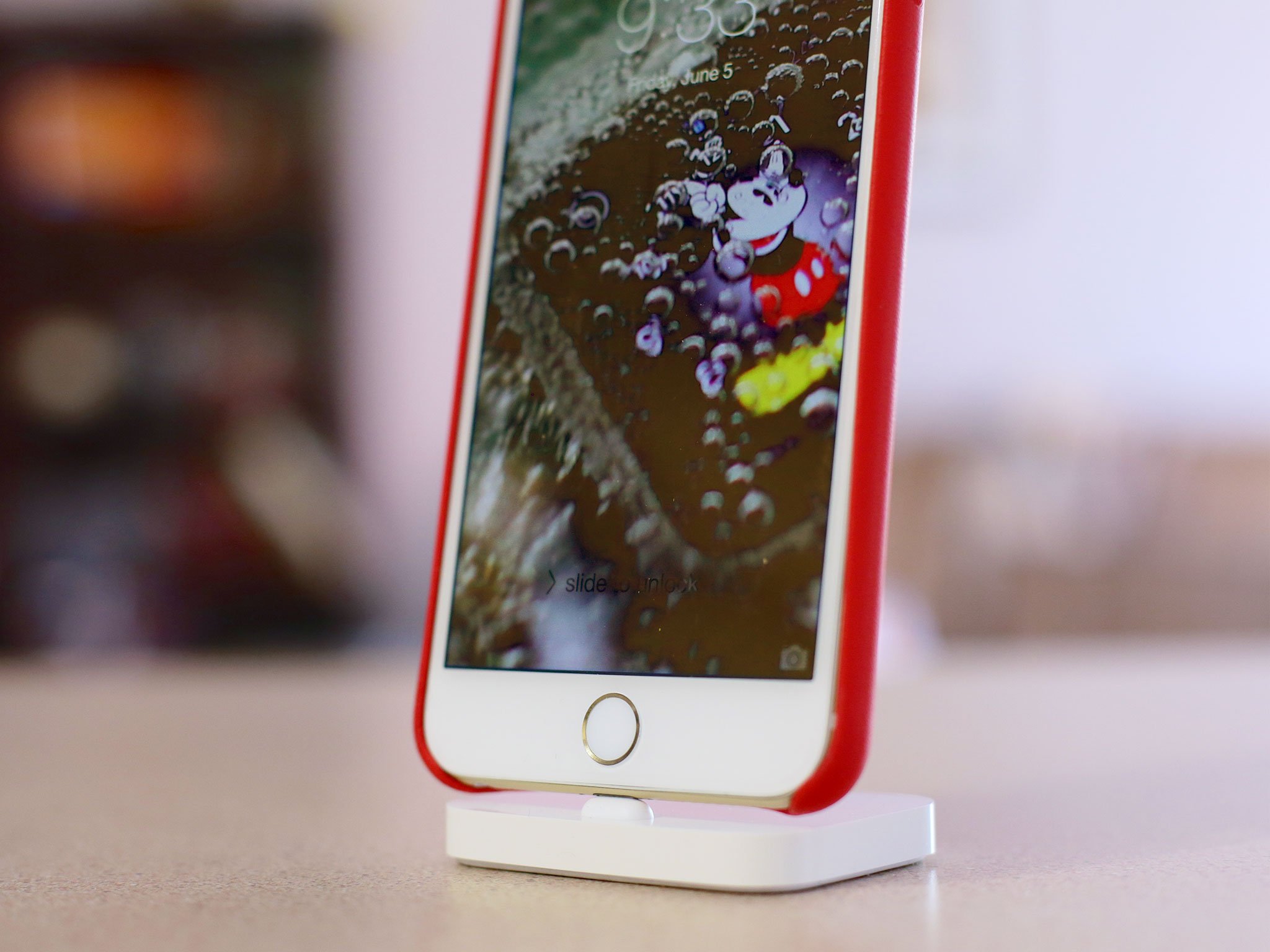
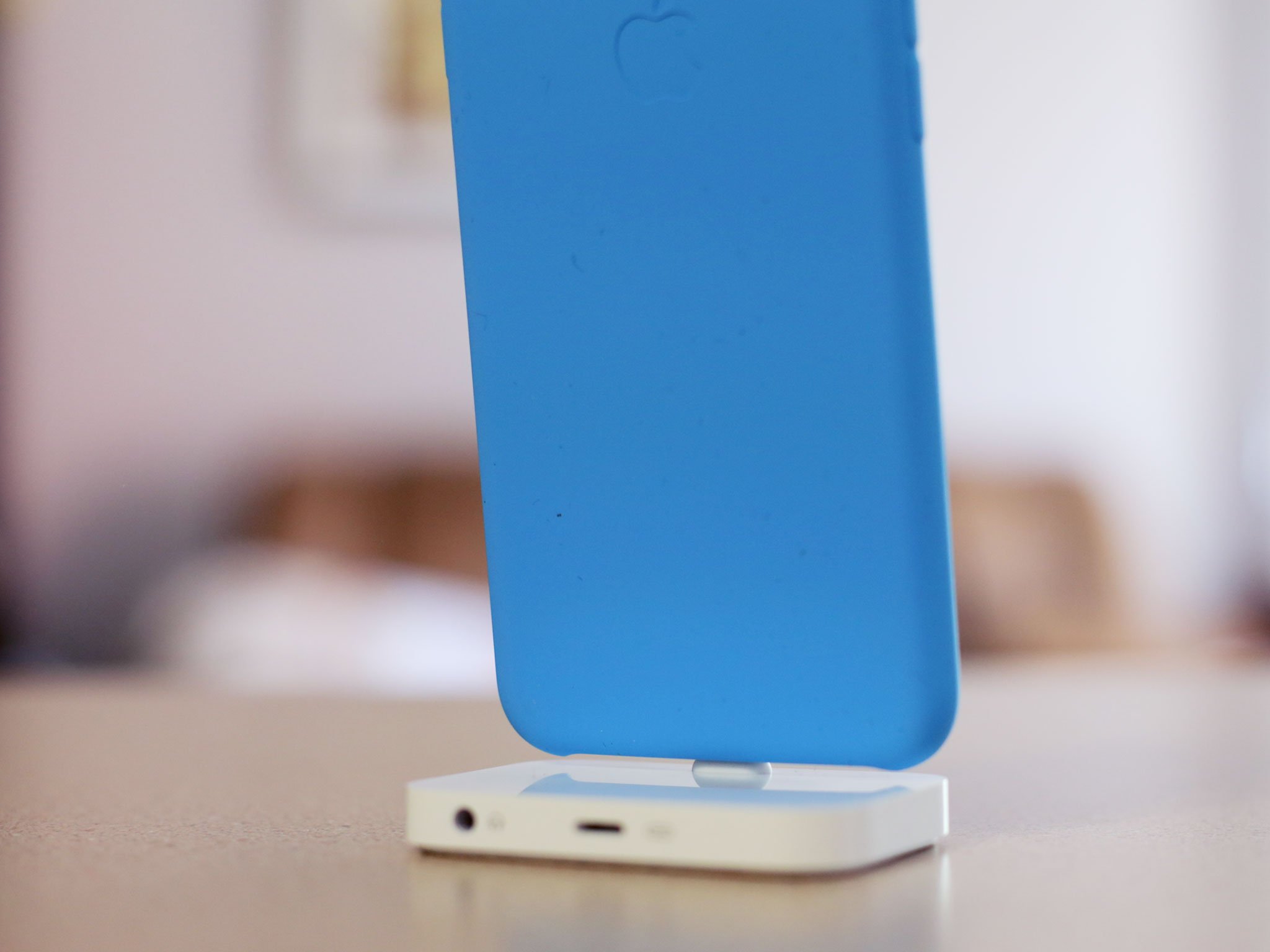
There's a nice weight to the iPhone Lightning Dock, but like almost every other Lightning Dock, the connector is tight enough that you can't just pluck your phone up off of it with one hand. The dock will come with it. Depending on your angle and dexterity, you can do that squeeze move where you try to pull the iPhone off while simultaneously pushing the dock away, but it never works consistently for me.
Because Lightning is small, and the connector is angled on the dock, it sometimes takes me a moment or two to plug it in. You get the hang of it in time, or rather you learn to rotate the dock to a workable position before going in for the plug.
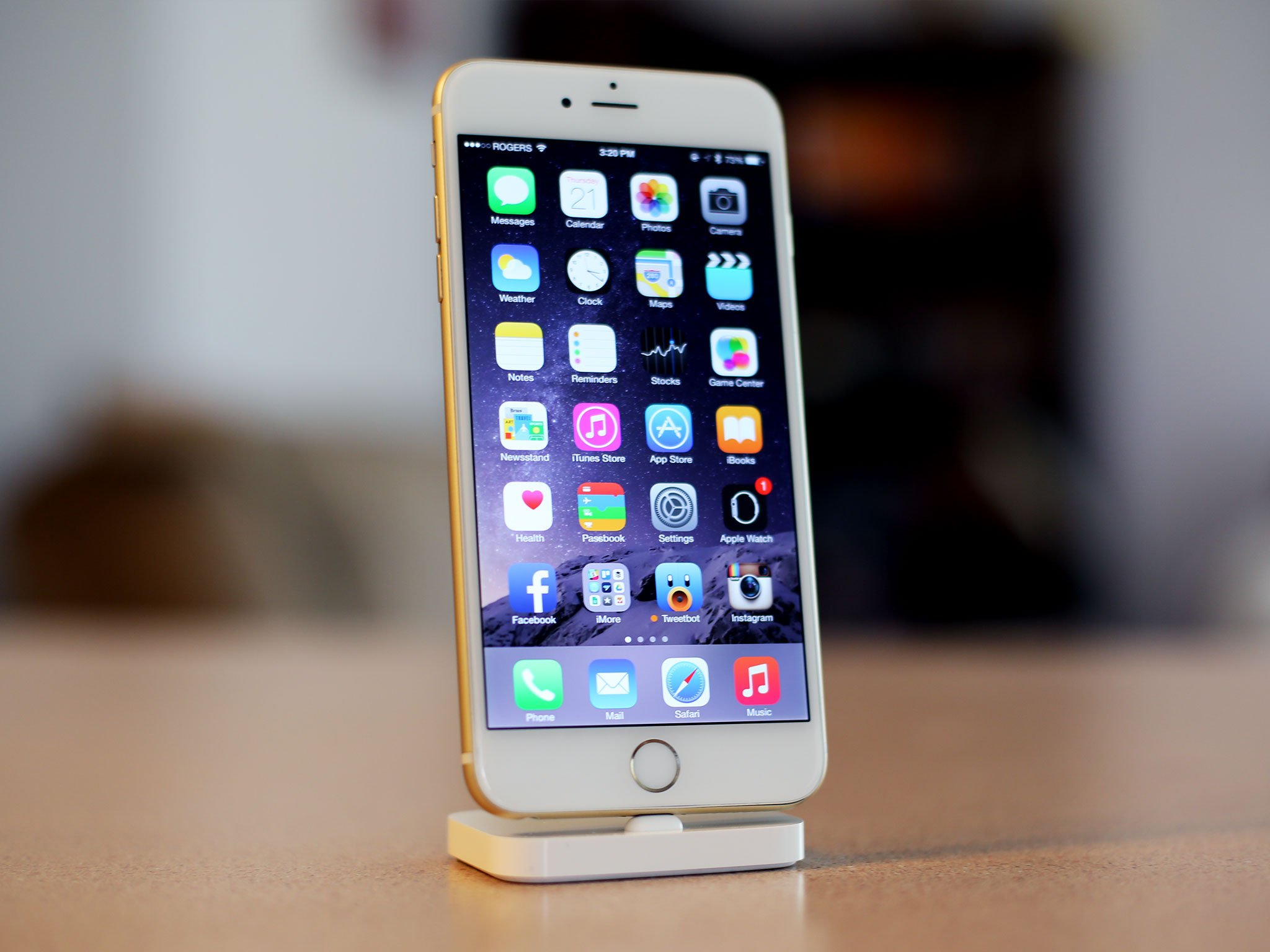
It took Apple some seven months to release a Lightning Dock that works with the iPhone 6 and iPhone 6 Plus. I don't know what they were waiting for, but I'm glad they didn't wait any longer. I've been using the iPhone Lightning Dock every night since it was released, and it's not just as good as Apple's previous generations — it's better.
There are many other docks on the market now, of course. They all tried to fill the gap Apple had left. That Apple has released its own dock now doesn't change anything. Apple's remains simple and essential. The barest possible bit of plastic you need to plug in. Other docks provide completely different looks and often additional functionality as well.
If all you want is the Apple aesthetic and a place to charge, however, the iPhone Lightning Dock is a solid place to do it.
- $39 - Order now
Updated to include information about using the iPhone Lightning Dock with cases.

Rene Ritchie is one of the most respected Apple analysts in the business, reaching a combined audience of over 40 million readers a month. His YouTube channel, Vector, has over 90 thousand subscribers and 14 million views and his podcasts, including Debug, have been downloaded over 20 million times. He also regularly co-hosts MacBreak Weekly for the TWiT network and co-hosted CES Live! and Talk Mobile. Based in Montreal, Rene is a former director of product marketing, web developer, and graphic designer. He's authored several books and appeared on numerous television and radio segments to discuss Apple and the technology industry. When not working, he likes to cook, grapple, and spend time with his friends and family.
